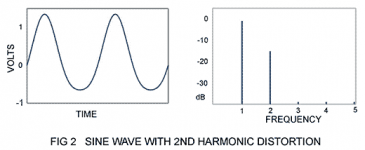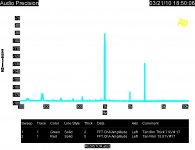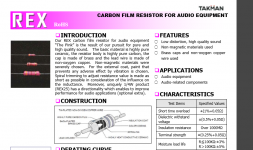You must be under 70, without tinnitus, and not an eskimo either.
Regards
M. Gregg
They do improve an SA-100, but nowhere near the limits you could reach by actually designing the changes. I had hoped we would see a clean upgrade, instead we get more internet hacking.
-Chris
The output stage mod seems to have a lot going for it. Bit expensive for a DIY job, but they have to make their money. But having looked more closely at the input stage circuit not changing that seems to be a waste.
Hi billshurv,
I change both ends. Input and output circuits both have technical problems and it wasn't possible to change only one section to correct the overall problems. The output section is changed to bipolar devices. I do have a version that uses the original output stage, but there are changes in there as well. People who have listened to both have a strong preference for the bipolar output stage.
I kept an original stock amplifier, one with changes and mosfet outputs and another with bipolar outputs and continued to compare with each other. Reference points to ensure the direction I was going was truly a positive one. We are at the point where we can sell the original amplifier off. It belongs to the customer and he is thinking it would be better to execute the changes before letting that sick puppy out in the world. We no longer need that reference for how badly the amplifier performed.
-Chris
I change both ends. Input and output circuits both have technical problems and it wasn't possible to change only one section to correct the overall problems. The output section is changed to bipolar devices. I do have a version that uses the original output stage, but there are changes in there as well. People who have listened to both have a strong preference for the bipolar output stage.
I kept an original stock amplifier, one with changes and mosfet outputs and another with bipolar outputs and continued to compare with each other. Reference points to ensure the direction I was going was truly a positive one. We are at the point where we can sell the original amplifier off. It belongs to the customer and he is thinking it would be better to execute the changes before letting that sick puppy out in the world. We no longer need that reference for how badly the amplifier performed.
-Chris
As to the blather here it not only showed how to make precise measurements without the use of references it also used a bridge to allow the use of off the shelf oscillators by nulling the signal source. Prior to that method was the one developed in the '60s as used in the Radiometer Copenhagen units to use a very, very low distortion current source to drive the resistor under test and then look at the resulting third harmonic distortion. Prior to that you used an oven and precise method of measuring resistance change.
No NIST published (in journals that one might not normally read) resistor distortion tests by other techniques when they were developing the quantum Hall effect as the new voltage standard.
It is my OPINION that all the effects are thermal in nature, the seconds are easy to explain with the Seebeck effect. Discontinuities at the origin have no physical basis, but I AM open minded if I could see some tests without a sea of spurious signals that I should ignore.
It is my OPINION that all the effects are thermal in nature, the seconds are easy to explain with the Seebeck effect.

Second harmonic implies a directional characteristic.
Are you saying that the 'heatsinking' provided by the connections (pcb tracks) to a two terminal device, in this case resistor are worthy of consideration in designs ?.
Dan.
Got a link to your esteemed writings about measuring resistor distortion?
Linear Audio Volume 1
No NIST published (in journals that one might not normally read) resistor distortion tests by other techniques when they were developing the quantum Hall effect as the new voltage standard.
It is my OPINION that all the effects are thermal in nature, the seconds are easy to explain with the Seebeck effect. Discontinuities at the origin have no physical basis, but I AM open minded if I could see some tests without a sea of spurious signals that I should ignore.
You should read that AP paper. Voltage coefficient in good resistors -120 to -140 dB, thermal as you know increases as frequency decreases. As much musical energy is around 100-150 Hz. That would put decent metal film thirds -110 dB. at full power.
Then there are issues from the Seebeck effect (voltages produced by heating different materials more commonly called thermoelectric.)
Attachments
Last edited:
So is the claim that resistors are directional?
Even if resistors are constructed symmetrically, they can be implemented asymmetrically.
One end may be connected directly to a pcb plane, which will be a good heat sink,
while the other end could go to a long narrow trace. This could cause thermal asymmetry.
Mounting orientation can cause similar issues, like vertical vs horizontal. Not to mention
one end of the resistor being heated up more than the other by some other hot component,
which could be nearby, or else electrically connected by one lead, which will act as a heat sink.
Last edited:
for a DIY job
You don't do your own PCB's ?
(I've got lateral MOSFETs by the many hundreds, Hitachi, Exicon, TO-3s, plastics. Bought Exicon's for £2/pc in England, Japanese full-metal straitjackets at this forum for $1 each)
View attachment 517258
Second harmonic implies a directional characteristic.
Are you saying that the 'heatsinking' provided by the connections (pcb tracks) to a two terminal device, in this case resistor are worthy of consideration in designs ?.
Dan.
No, I studied this in 1982 and could get no serious help from the academics. Even pure metal like aluminum to gold has a 2-3uV/C tempco, I tried to find out what 60u gold plating did to kovar did but none of the experts knew. The reason was a 6uV warm up drift in an in-amp, it turned out the + and - inputs stabilized at a few degrees difference due to lead frame geometry and quiescent heat flow.
Now heat goes only one way with device dissipation so if the heat flows more out of one end connection than the other it is a second harmonic signal. You only need 1 degree to get >ppm levels with even pure metals which film resistors are not.
All covered in 1973 by NS. http://www.ti.com/lit/an/snoa853/snoa853.pdf
Last edited:
Just for fun..
Quote:
Every component must have an error budget assigned to it which, if exceeded, will cause the equipment to fall out of its performance specification, or possibly fail. In addition to initial tolerance, the error budget includes allowable shifts through shelf life, assembly, TCR, shock, vibration, humidity exposure, thermal shock, thermal EMF, load-life drift, ESD, radiation, and harmonic distortion (harmonic distortion is a measure of a component’s conformance to Ohm’s law as a predictor of reliability.)
This is why precision resistors with the same resistance, tolerance, and TCR but of different technologies are not interchangeable: because their changes through service life are not the same. Substitution on the basis of these alone could jeopardize performance and mission success. Only the OEM engineer who did the error budget analysis can determine a suitable substitute. Unfortunately, today we see more and more attempts by certain electronic manufacturing services to replace precision resistors with cheaper solutions that put system performance at risk.
Reference:
http://www.vishaypg.com/docs/63517/FACTS-121.pdf
Tantalum Vs Metal Film
https://www.youtube.com/watch?v=s6aIfBk7qPw
Regards
M. Gregg
Quote:
Every component must have an error budget assigned to it which, if exceeded, will cause the equipment to fall out of its performance specification, or possibly fail. In addition to initial tolerance, the error budget includes allowable shifts through shelf life, assembly, TCR, shock, vibration, humidity exposure, thermal shock, thermal EMF, load-life drift, ESD, radiation, and harmonic distortion (harmonic distortion is a measure of a component’s conformance to Ohm’s law as a predictor of reliability.)
This is why precision resistors with the same resistance, tolerance, and TCR but of different technologies are not interchangeable: because their changes through service life are not the same. Substitution on the basis of these alone could jeopardize performance and mission success. Only the OEM engineer who did the error budget analysis can determine a suitable substitute. Unfortunately, today we see more and more attempts by certain electronic manufacturing services to replace precision resistors with cheaper solutions that put system performance at risk.
Reference:
http://www.vishaypg.com/docs/63517/FACTS-121.pdf
Tantalum Vs Metal Film
https://www.youtube.com/watch?v=s6aIfBk7qPw
Regards
M. Gregg
Last edited:
You don't do your own PCB's ?
(I've got lateral MOSFETs by the many hundreds, Hitachi, Exicon, TO-3s, plastics. Bought Exicon's for £2/pc in England, Japanese full-metal straitjackets at this forum for $1 each)
Not for about 20 years. Life and kids somehow got in the way. My comment was for me $700 for new output stages was too much.
I used to hoard engine parts. But I got better. What's your excuse
Just another laugh,
How can resistors be directional...
So why make it a selling point..more like something is found to be directional so lets make it a selling point..But why could they even if by accident become directional..hard to believe isn't it.
I will shut up because it goes on and on..
Regards
M. Gregg
How can resistors be directional...
So why make it a selling point..more like something is found to be directional so lets make it a selling point..But why could they even if by accident become directional..hard to believe isn't it.
I will shut up because it goes on and on..
Regards
M. Gregg
Attachments
Last edited:
Just another laugh,
How can resistors be directional...
So why make it a selling point..more like something is found to be directional so lets make it a selling point..But why could they even if by accident become directional..hard to believe isn't it.
Regards
M. Gregg
Send me 2 1K units and I'll run the distortion tests. But carbon is not a generally top of the class material.
Send me 2 1K units and I'll run the distortion tests. But carbon is not a generally top of the class material.
Simon I'm not that interested I have heard changes for 40 years..yes ears lie..OK I'll accept that so nothing else to say really is there.
No matter what people say it will always be the same story.
I always choose parts..I know cheap nasty MF sound like c**p..
This has been going on for as long as I can remember..
I have even seen resistor types change the transmission distance on data HI way plus but that's not the point is it..
Regards
M. Gregg
Last edited:
Here is something that stopped me in my tracks,
The wife in the kitchen scenario again...lets have a good laugh now then I can tell you the story..
I was in the kitchen last week<<yes last week.
I had heard this continual whine from the tumble dryer for at least a week and finally it got on my nerves a high pitch squeal when it ran in the reverse direction not as high as a dog whistle but very high pitch. I knew what it was the bearing had gone dry yet again that had me repairing it on a regular basis.
But the squeal was so loud it was driving me nuts...I said to the wife I must oil that bearing its going again..what are you on about she said...I said that pigging loud high pitch squeal in the reverse direction. She stopped and listened..your hearing things..I said wait there listen..no she said I cant hear it..what I said..its driving me nuts..its in your head she said..its still squealing..
Well women are supposed to have better hearing right..so I must be hearing things..its still driving me nuts and when I turn it off the squeal stops..Its my imagination got to be. Now it makes me think the high pitch changes in the HIFI who is bothered..its all in your head.
Who could live with what type of system...Your on a loser..if you can measure it you might not be able to hear it if you can't live with it, its in your imagination.
Regards
M. Gregg
The wife in the kitchen scenario again...lets have a good laugh now then I can tell you the story..
I was in the kitchen last week<<yes last week.
I had heard this continual whine from the tumble dryer for at least a week and finally it got on my nerves a high pitch squeal when it ran in the reverse direction not as high as a dog whistle but very high pitch. I knew what it was the bearing had gone dry yet again that had me repairing it on a regular basis.
But the squeal was so loud it was driving me nuts...I said to the wife I must oil that bearing its going again..what are you on about she said...I said that pigging loud high pitch squeal in the reverse direction. She stopped and listened..your hearing things..I said wait there listen..no she said I cant hear it..what I said..its driving me nuts..its in your head she said..its still squealing..
Well women are supposed to have better hearing right..so I must be hearing things..its still driving me nuts and when I turn it off the squeal stops..Its my imagination got to be. Now it makes me think the high pitch changes in the HIFI who is bothered..its all in your head.
Who could live with what type of system...Your on a loser..if you can measure it you might not be able to hear it if you can't live with it, its in your imagination.
Regards
M. Gregg
Last edited:
M. Congratulations, you still hear at high frequencies! (at least some) '-)
I have had 3 experiences just like that over the decades:
First: In 1968, I was working in the audio department at Ampex, when I was called over to another room to hear something. For some, there was nothing going on, with others there was something, and then with me, it was almost overwhelming. A high pitched sound just at the limit of hearing, BUT very loud. It was literally bouncing off the walls. I finally pinned it down to a capstan motor bearing that was undergoing a life test.
Nobody else could hear it distinctly.
In perhaps 2112 I was in one of Jack Bybee's cars (a Mercedes) and a dash alarm went off. It was a seatbelt alarm, and Jack could not hear it. I certainly did!
Recently, one of my techs (who is 74) but seems to have normal hearing could NOT hear the test tone from his ohmmeter. I heard it well enough. When we switched to another brand of multimeter he could then hear it. He was really miffed.
For the record, it might be that your wife has excess wax in her ears. It happened to me big time once and I had to go to a doctor to remove it. THEN it was when I could hear that ultrasonic whistle from the capstan bearing from the wax free ear. Perhaps it would be worth discussing with your wife. TRUST YOUR EARS! You are no fool. '-)
I have had 3 experiences just like that over the decades:
First: In 1968, I was working in the audio department at Ampex, when I was called over to another room to hear something. For some, there was nothing going on, with others there was something, and then with me, it was almost overwhelming. A high pitched sound just at the limit of hearing, BUT very loud. It was literally bouncing off the walls. I finally pinned it down to a capstan motor bearing that was undergoing a life test.
Nobody else could hear it distinctly.
In perhaps 2112 I was in one of Jack Bybee's cars (a Mercedes) and a dash alarm went off. It was a seatbelt alarm, and Jack could not hear it. I certainly did!
Recently, one of my techs (who is 74) but seems to have normal hearing could NOT hear the test tone from his ohmmeter. I heard it well enough. When we switched to another brand of multimeter he could then hear it. He was really miffed.
For the record, it might be that your wife has excess wax in her ears. It happened to me big time once and I had to go to a doctor to remove it. THEN it was when I could hear that ultrasonic whistle from the capstan bearing from the wax free ear. Perhaps it would be worth discussing with your wife. TRUST YOUR EARS! You are no fool. '-)
- Status
- Not open for further replies.
- Home
- Member Areas
- The Lounge
- Resistor Sound Quality?

